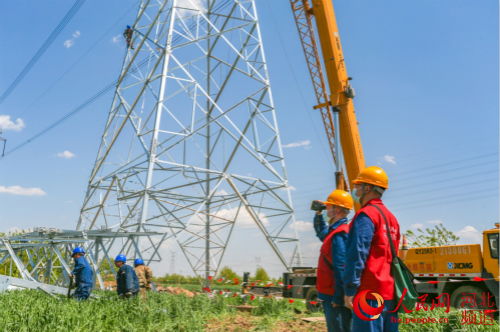Composite Insulators Overhaul
03-12-2021
Composite insulators have been widely used in power systems because of their light weight, high strength, strong pollution flashover resistance, and convenient manufacturing and maintenance, breaking the long-term dominance of porcelain and glass insulators. According to incomplete statistics, the total number of composite insulators in my country's power grid is about 2 million. In terms of the number of use, my country has become the second largest country in the use of composite insulators after the United States. However, as the operating time and number of operations increase, the information about the failure of composite insulators also gradually increases. According to incomplete statistics, as of 1998, 15 interface breakdown accidents had occurred in East China and North China, and 23 pollution flashover accidents had occurred in Guangdong, East China, and North China. Obviously, while improving the formula and manufacturing process and improving the quality of composite insulators, it is of great significance to carry out targeted research on the detection technology of operating composite insulators to ensure the safe operation of the power grid. At present, the detection technology of the director's full insulator in operation mainly includes:
Direct observation method
At present, the most commonly used method for external physical defects of composite insulators is direct observation, that is, using binoculars to observe under the tower to find common surface defects such as sheaths, umbrella skirts, fittings, etc., whether there are cracks, electrical corrosion damage, etc. , Chalking, leakage traces, etc. If there are any of the above phenomena, the insulation should be replaced immediately. However, the ground observation is not reliable enough, and it is necessary to climb the tower for inspection and it is difficult to find internal insulation faults such as tree-like channels.
The specific observation content is:
- Observe the partial discharge on the surface of the composite insulator under weather conditions such as rain, fog, and dew
- Whether there is obvious slippage and electrical corrosion of accessories at the connection part of the end fittings.
Ultraviolet imaging method
The tiny but stable surface partial discharge will cause the composite insulator umbrella skirt and sheath to form a carbonized channel or electrical corrosion loss. When a carbonized channel is formed on the surface of an insulator, its service life will be greatly reduced, and it will even be broken down in a short time. The electronic ultraviolet optical damage control instrument can be charged to detect the carbonization channel and the electrical corrosion loss formed by the partial discharge on the surface of the composite insulator. The principle is that the charged particles recombine during the partial discharge process and emit ultraviolet rays. When the conductive carbonization channel is formed on the surface of the insulator , Partial discharge intensifies. The disadvantage of this method is that it requires operation at night and in a positive temperature environment; in addition, it requires that partial discharge is occurring during the detection, which requires that the detection should be performed in an environment with high humidity or even rain. However, the detection result is easily affected by the degree of observation, and the detection equipment is also relatively expensive.
Ultraviolet imaging method
The infrared imaging method can detect the local temperature rise of the edge caused by the partial discharge, the dielectric loss or the resistance loss when the leakage current flows through the insulating material, and it can be used for line detection. The Foshan Power Supply Branch of the Radio and Television Group conducted a general infrared thermal imaging temperature survey on a large number of operating composite insulators. The results found that: for all insulators with obvious local hot spots, the surface of the silicone rubber from the hot spots to the high-voltage end of the insulator was significantly blackened, chalked, and pulverized. It becomes brittle, water-repellent is basically lost, and some have many small cracks or even serious damage; the heating point to the high-voltage end cannot withstand the power frequency withstand voltage test or the steep wave impact test. It can be seen that the heating point is the position where the partial discharge of the internal insulation price level progresses. . The high cost of the instrument and the measurement susceptibility to sunlight, strong wind, moisture, ambient temperature and some factors that can cause rapid changes in the surface temperature of the insulator are the shortcomings of the infrared imaging method. Also affected its application. The infrared thermal imaging camera detects synthetic insulators, but the effect is not very satisfactory.
